Northwestern cuisine always brings endless inspiration to travelers due to the uniqueness of its famous specialties. From ingredients and preparation to the flavors of Northwestern dishes, they are unmistakably distinct. The culinary space here is a cultural intersection of ethnic minorities in the highlands. Are you ready to discover unique dishes, imbued with the flavors of the mountains and forests and the cultural identity of the Northwest region? Let’s explore with “Du lịch khắp thế gian” right now!
Northwestern specialties are not just a harmonious combination of flavors, but also a bridge between people and nature, between the past and the present. Each dish contains a cultural story, customs, and a piece of the history of this land. A culinary journey to the Northwest will be an unforgettable experience, helping you understand more deeply about the land and people here.
Discovering the Unique Flavors of Northwestern Cuisine
The Northwest, a convergence of many unique cultures, from Viet, Thai, Hmong, Dao, to Tay, Nung, Giay… Each ethnic group contributes to creating a diverse and rich culinary picture, reflecting their own identity and lifestyle. Northwestern specialties are famous for their bold, attractive flavors and the wild essence of the mountainous region.
Northwestern cuisine is not just about enjoying flavors, but also about feeling the affection, hospitality, and friendliness of the people here. Northwestern specialties will always be an indispensable part of the Vietnamese culinary map, contributing to the richness and diversity of the national cuisine. Let’s explore the most distinctive dishes of the Northwest region!
Top 10 Must-Try Northwestern Vietnam Dishes
1. Smoked Buffalo Meat (Khăng Gà Mắc Khén)
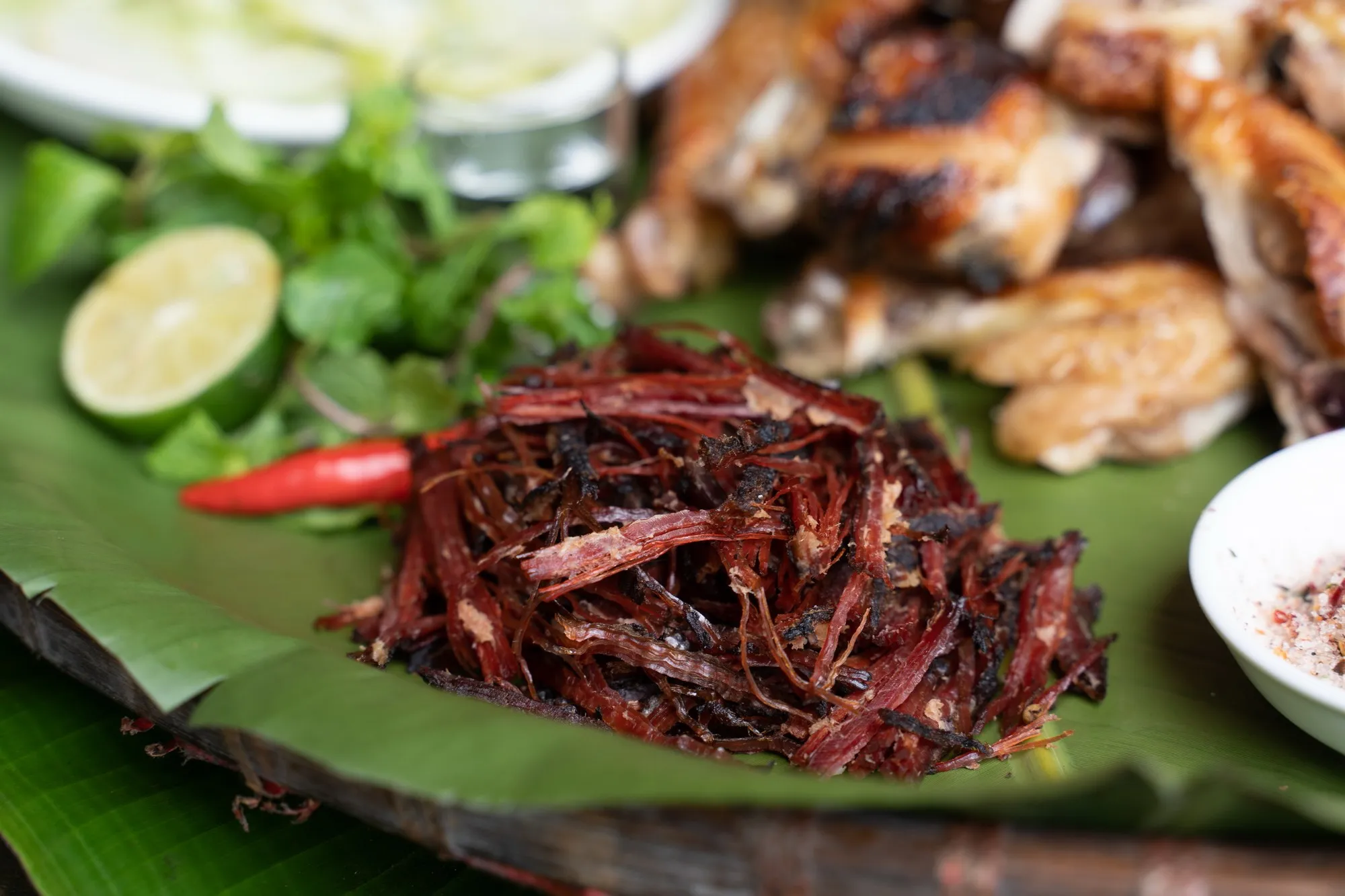
Smoked buffalo meat, also known as “khăng gà mắc khén” (in Thai), is a familiar dish of the Thai, Muong, Dao, and other ethnic groups. This dish is prepared by smoking buffalo meat over a wood stove, creating a unique flavor that cannot be mistaken.
Buffalo meat, after being marinated with spices (salt, chili, ginger, mắc khén…), is hung above the stove and smoked with firewood from various forest trees. This process lasts for 2-3 months, helping the meat dry out, with a dark black color on the outside, but still retaining its fresh red color and natural sweetness inside. When eating, smoked buffalo meat is usually grilled or steamed, shredded, and dipped in chili sauce or chẩm chéo.
2. “Carrying Under Arm” Pig (Mường Pig)
“Carrying under arm” pig, or Mường pig, is a specialty pig breed of the Northwest region. The pigs are small in size and raised naturally on hillsides, so the meat is very firm, fragrant, delicious, and lean.
“Carrying under arm” pig can be processed into many attractive dishes such as: grilled pig, steamed pig, pig stir-fried with lemongrass and chili, giả cầy (fake dog meat), lòng dồi (pig intestines)… In particular, grilled pig is the most popular dish, with crispy skin, tender sweet meat, and a characteristic aroma of the mountains and forests.
3. Nậm Pịa
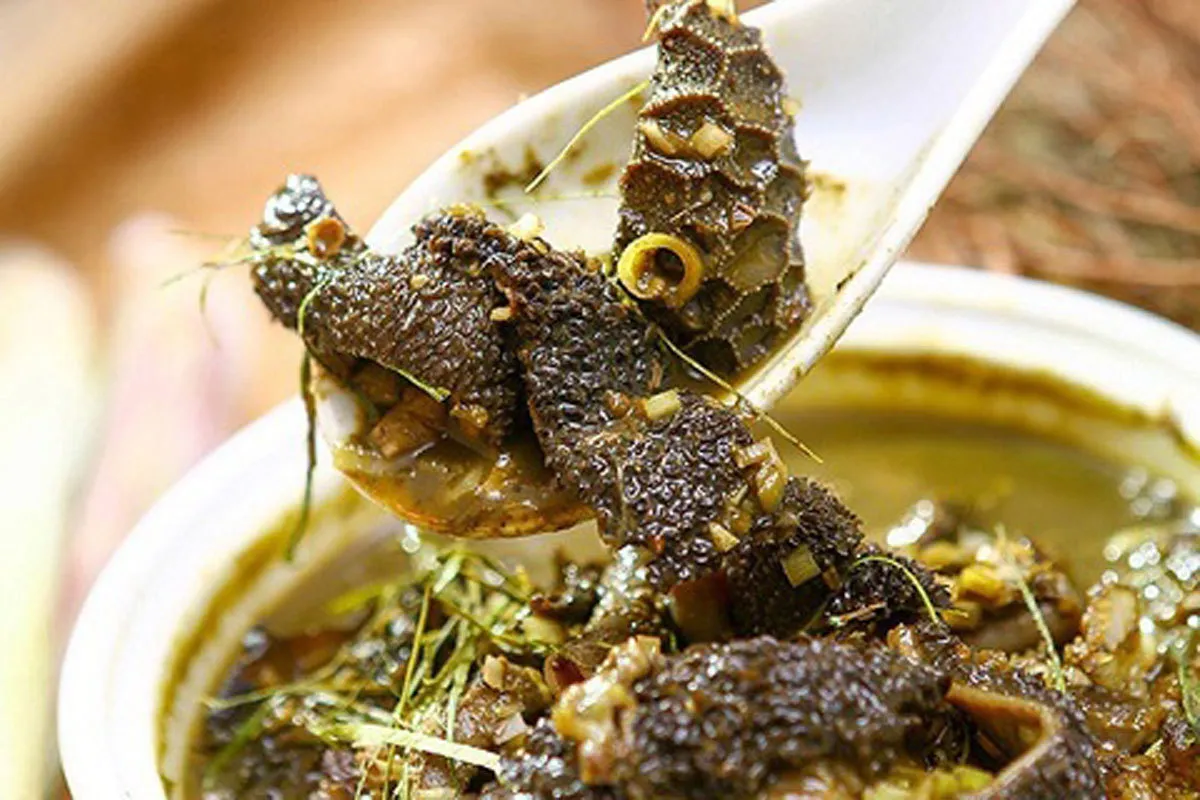
Nậm pịa is a traditional dish of the Thai ethnic group, made from the offal of buffalo, cow, goat… This dish has a unique flavor, slightly bitter and pungent, so not everyone dares to try it.
Nậm pịa is prepared by simmering various types of offal such as: intestines, stomach, liver, heart, lungs… along with blood and spices such as: lemongrass, chili, ginger, mắc khén… After simmering until tender, pịa (liquid from the small intestine of animals) is added, creating the characteristic flavor of the dish. Nậm pịa is usually served with raw vegetables and hot rice.
4. Sapa Salmon

Sapa salmon is a famous specialty of the Northwest mountains. The fish are raised in the cold, clean water of Sapa, so the meat is very firm, fragrant, delicious, and nutritious.
Sapa salmon can be processed into many attractive dishes such as: salmon salad, salmon hotpot, grilled salmon, salmon sashimi… In particular, salmon salad is the most popular dish, with the fresh taste of salmon, the sour and spicy taste of spices, and the crispiness of raw vegetables.
5. Thắng Cố (Horse Meat Hotpot)
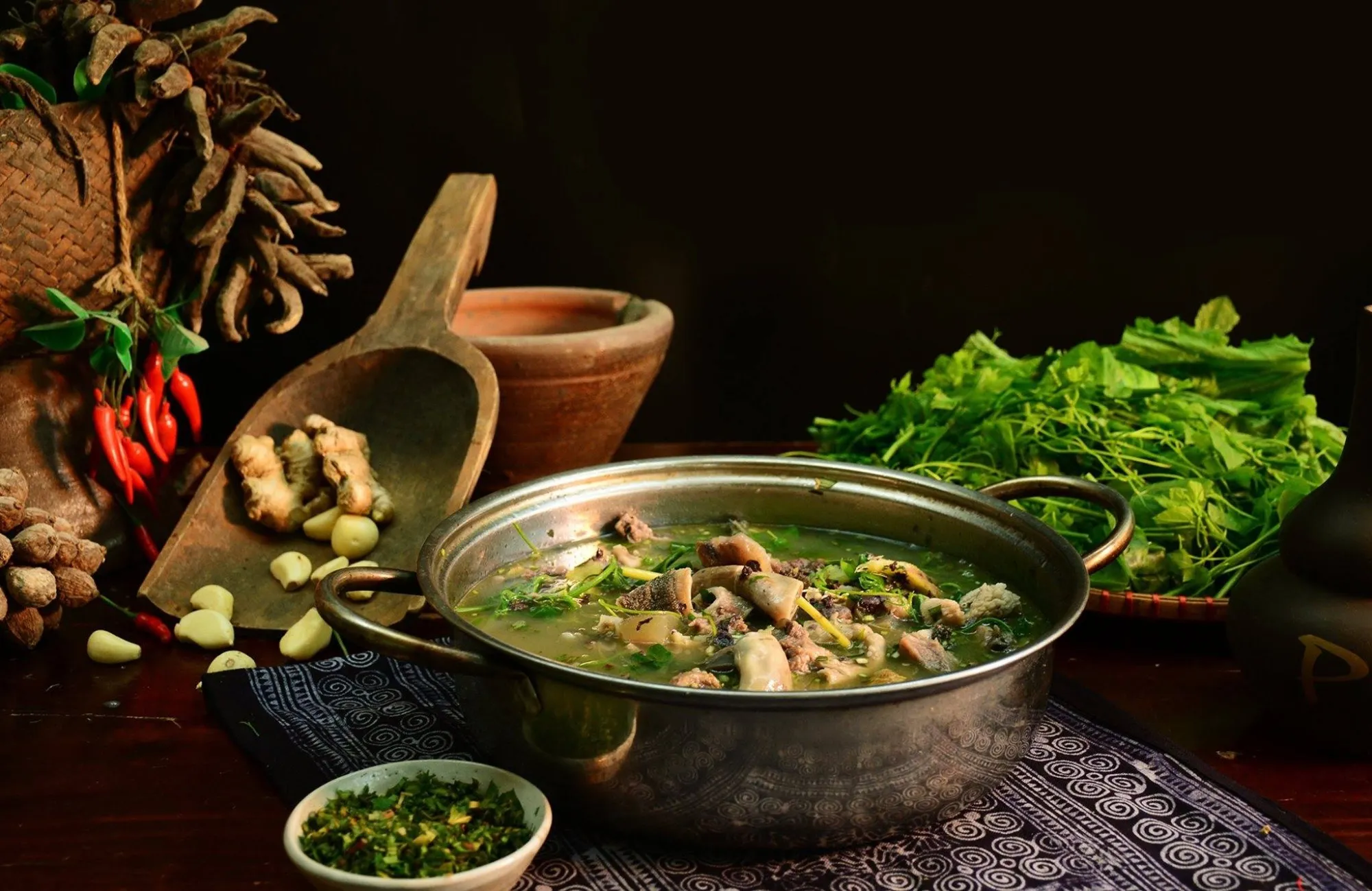
Thắng cố is a traditional dish of the Hmong, Tay, Nung… This dish is made from horse meat and offal (or buffalo, cow), simmered until tender with special spices.
Thắng cố is usually cooked in a large pot, with all kinds of meat and offal such as: intestines, heart, liver, lungs, blood… along with spices such as: lemongrass, chili, ginger, mắc khén, cardamom… Thắng cố has a bold, rich, and fragrant flavor of spices. This dish is usually eaten hot during festivals and market days.
6. Black Chung Cake (Bánh Chưng Đen)

Black Chung cake is a specialty of the Tay people, made from upland sticky rice, dyed black with ash from the núc nác tree. The cake has a unique flavor, fragrant, delicious, and smooth.
Black Chung cake is wrapped in dong leaves, with fillings including: pork, green beans, pepper… The cake is boiled for about 10-12 hours until it is tender. Black Chung cake is usually eaten during Tet Nguyen Dan (Lunar New Year), symbolizing warmth and prosperity.
7. Táo Mèo Wine (Docynia indica Wine)
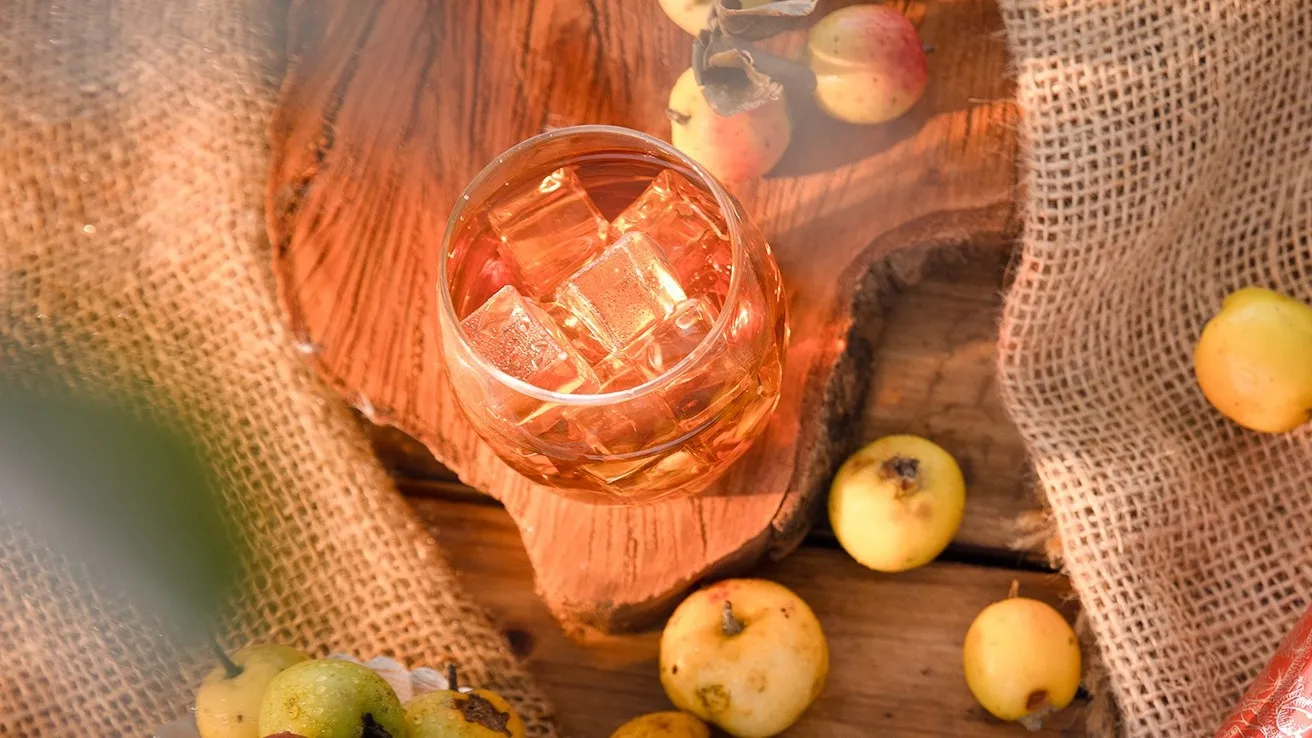
Táo Mèo wine is a famous specialty of the Northwest region, made from táo mèo fruit (Docynia indica) soaked and fermented with yeast. The wine has a delicious, sweet and sour taste and is good for health.
Táo Mèo wine has a pale yellow color, a characteristic aroma of táo mèo, and a spicy taste of alcohol. The wine helps stimulate digestion, reduce cholesterol, and is good for the heart. Táo Mèo wine is often used in family meals, parties, or as gifts.
8. Cơm Lam (Bamboo Rice)
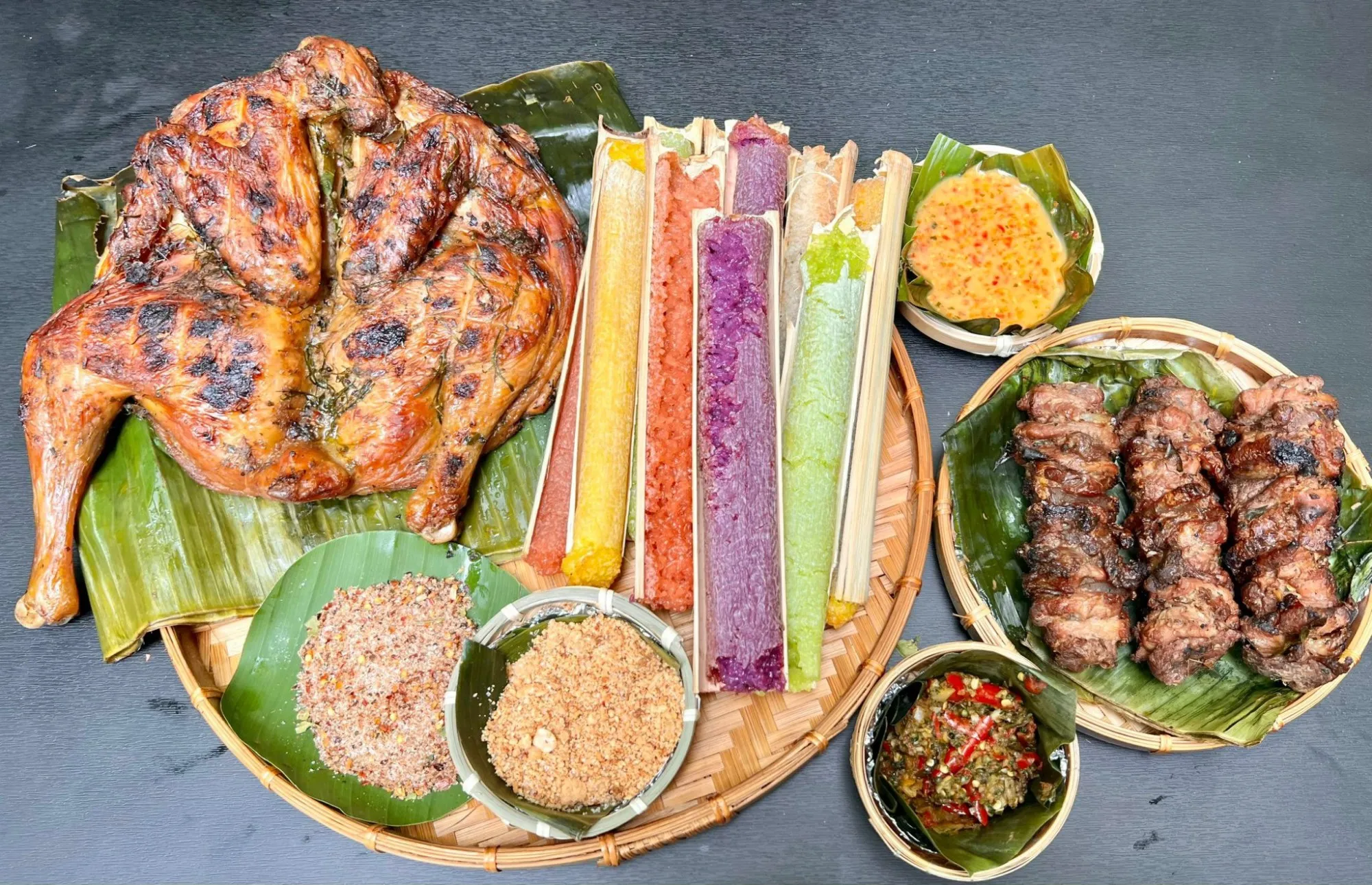
Cơm lam is a rustic dish of many ethnic minorities in the Northwest. The rice is cooked in bamboo tubes, creating a unique, fragrant, delicious, and soft flavor.
Cơm lam is made from sticky rice, put into bamboo tubes, filled with enough water, and grilled over charcoal. When the rice is cooked, the outer bamboo shell is removed, leaving only a thin membrane covering the rice. Cơm lam is usually served with grilled meat, grilled chicken, or sesame salt.
9. Mèn Mén (Steamed Corn Flour)
Mèn mén is a familiar dish of the Hmong people, made from finely ground corn flour. Mèn mén has a unique, nutty flavor and is often eaten as a staple food instead of rice.
Mèn mén is prepared by steaming corn flour in a steamer until cooked. Mèn mén is usually served with cải mèo (mustard greens), meat, or broth. This dish is not only an important food source but also a part of the culinary culture of the Hmong people.
10. Chẩm Chéo (Northwestern Dipping Sauce)
Chẩm chéo is a characteristic dipping spice of the Northwest region, made from salt, chili, garlic, ginger, mắc khén, and herbs. Chẩm chéo has a spicy, fragrant, and delicious flavor and is often used to dip dishes such as: boiled meat, raw vegetables, fruits…
There are many different types of chẩm chéo, depending on the ingredients and preparation methods of each region. However, all types of chẩm chéo have a common characteristic of being spicy and fragrant, contributing to enhancing the flavor of dishes.
Conclusion
Northwestern cuisine is a priceless cultural treasure, with unique dishes imbued with the flavors of the mountains and forests and the cultural identity of ethnic minorities. Hopefully, with the above suggestions from “Du lịch khắp thế gian”, you will have a truly interesting and memorable culinary journey in the Northwest region. Come and explore, enjoy the specialties, and feel the hospitality of the people here!